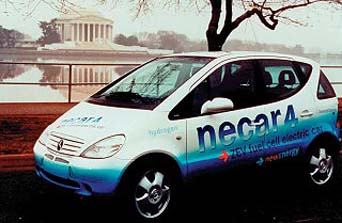5.2.2 Demand-side efficiency improvements
Let us now look briefly at what can be done to improve the efficiency of energy use at the demand side – that is, in our buildings, industries and vehicles.
Improving the sustainability of energy use by applying demand-side measures involves two distinct approaches, one technological, the other social.
The technological approach involves installing improved energy conversion (or distribution) technologies that require less input energy to achieve a given level of useful energy output or energy service.
The social approach involves re-arranging our lifestyles, individually and collectively, in minor or perhaps major ways, in order to ensure that the energy required to perform a given service is reduced in comparison with other ways of supplying that service.
For example, you may live in a densely populated town with shops, offices, schools and other amenities scattered evenly around. You may be able to do your shopping, go to work, and take the children to school without using a car, simply by walking relatively short distances. Or you may find it convenient to catch a bus, as bus services are usually more frequent and efficient in higher-density settlements.
On the other hand, you may live in a town with a similar population, but one that has been designed (as have many new towns) to have a low population density (i.e. fewer residents per hectare of land), with shops and offices concentrated in the town centre. In this case, you may well use a car for many of your local journeys, consuming fossil fuels and generating emissions of greenhouse gases and other pollutants. In both towns, the residents receive exactly the same levels of service: shopping, working, schooling, etc. But in the high-density town the residents can use energy services more sustainably than in the low-density town – all other things being equal.
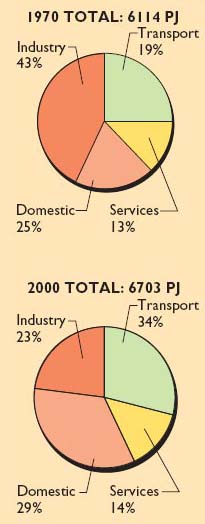
In government energy statistics, energy demand is usually broken down into four main sectors:
The Domestic Sector
This obviously consists of individual households, within which the main categories of energy use are for space heating, water heating, cooking, lighting and other electrical appliances.
The Commercial and Institutional Sector (often termed the Services Sector).
This consists of offices, shops, schools, hospitals, banks, etc. The energy requirements of this sector are very similar to those of the domestic sector: space heating, water heating, cooking, lights and appliances. Air conditioning, however, is more prevalent in this sector than in the domestic sector – at least in countries with temperate climates, like the UK. In this sector, as in the Domestic Sector, most of consumption is within buildings.
The main technological measures that can be taken to conserve energy and use it more efficiently within buildings include:
-
improved levels of insulation in walls, roofs and floors, to reduce heat losses through these elements;
-
energy-efficient windows, designed to allow less heat to escape whilst still admitting large amounts of sunlight;
-
draught-proofing and heat recovery systems to reduce heat lost through ventilation whilst retaining sufficient fresh air within the building;
-
more efficient boilers that require a smaller fuel input to achieve a given level of space or water heating, together with improved insulation of pipes to reduce heat losses;
-
energy-efficient lights that require much smaller amounts of power to provide a given level of illumination;
-
energy-efficient appliances, such as refrigerators, cookers, washing machines, dishwashers, TV sets and hi-fi equipment in the domestic sector; or more efficient computers, copiers and other business equipment in the commercial and institutional sector. These consume less energy whilst delivering the same level of service as their inefficient predecessors;
-
improved control systems, to ensure that energy-consuming equipment is not switched on when not needed, and that power output levels match the requirements of users.

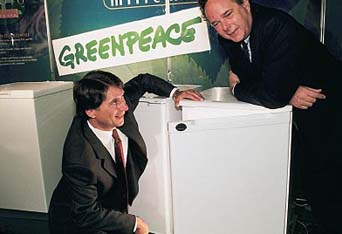
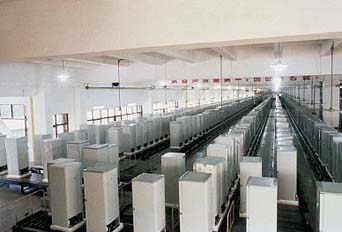
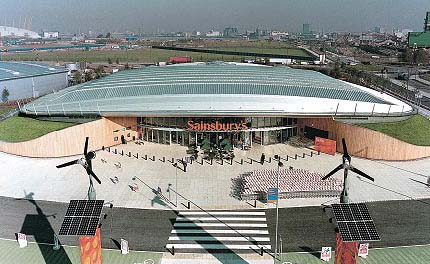
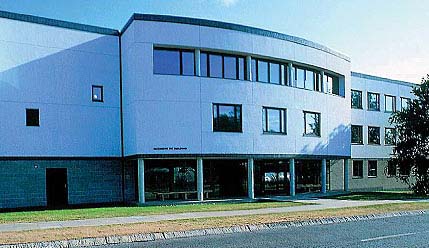
The Industrial Sector
This sector mainly covers manufacturing industry, service industries being categorised under 'Services'. Much of industrial energy use also occurs within buildings, and consists of requirements for space heating, water heating, cooking, lights and appliances, as in the domestic and commercial and institutional sectors. But in addition, many industries, such as the steel industry, use substantial quantities of high-temperature heat and large amounts of electricity to power various specialised processes. These demands in many cases exceed those of the buildings where the activities are housed and of the people within them.
So apart from improving the energy efficiency of the buildings and appliances in the industrial sector, where the approaches are similar to those in the domestic and services sectors, there are other measures that apply specifically to industry. In particular, these include 'cascading' of energy uses, where 'waste' heat from a high-temperature process is used to provide energy for lower temperature processes; and the use of high-efficiency electric motors, pumps, fans and drive systems, with accurate matching of motors to the tasks they are required to perform, and accurate sizing of pipes and their associated pumps.
Dematerialisation
The measures that can be adopted by industry also include reductions in the material content of products, for example in car bodies or drinks cans, where thinner metals can be used without any reduction in the required strength; or the substitution of less energy-intensive materials, as in the use of plastics instead of steel for car bumpers.
These measures are one form of what has been termed 'dematerialisation' – a reduction in the material-intensity (and hence the energy-intensity) of production.
Another form of dematerialisation involves changes that are more social than technological. It occurs when the structure of a country's entire economy shifts towards less energy- and materials-intensive activities. For example, in the UK the steel industry today accounts for a much smaller share of the country's gross domestic product (GDP) than it did 20 years ago. By contrast, the UK services sector now constitutes a much bigger fraction of GDP than two decades ago. Since the service sector usually requires less energy than the steel industry for every pound's worth of production, Britain's overall energy demands have been less than they would otherwise have been. However, if the steel that was formerly manufactured in Britain is now manufactured abroad but still imported to the UK in similar quantities, all that has happened is that the energy input, with its associated CO2 emissions and their implications for global warming, has been transferred to another country.
The Transport Sector
Motor vehicles (cars, vans, buses, trucks, motor cycles) dominate the transport sector in developed countries. But this sector also encompasses many other modes of transport, including rail, air and shipping, and non-motorised transport forms such as cycling and walking.
As can be seen from Figure 50, the various forms of transport vary enormously in their energy requirements per passenger-kilometre travelled. Cycling and walking, of course, require no fuel input apart from food.
In most developed countries there has been an enormous increase in transportation, measured in passenger-kilometres travelled annually, over the past few decades (Figure 51). Most of this has involved motorised transport, mainly fuelled by oil, and so energy use has also increased greatly, as have the associated CO2 emissions.
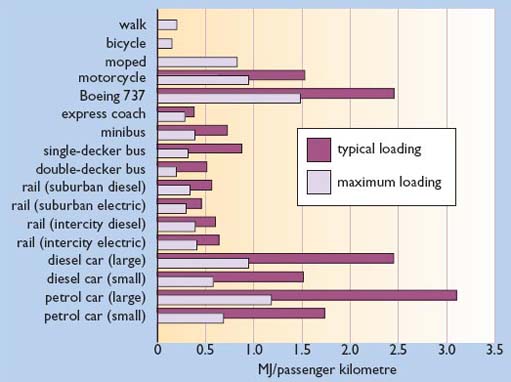
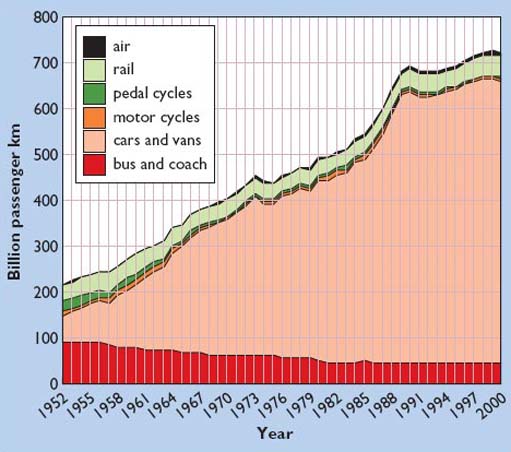
Transport Energy Demand Reduction: Social Measures
Clearly, one social way of reducing the energy required by the transport sector is to shift a proportion of people's journeys away from the energy-intensive modes and towards the more energy-frugal modes. This process is sometimes termed 'modal shift'.
This could be achieved without reducing the total number of journeys, or the overall distance travelled, so that the amenity or service enjoyed by the traveller would remain the same. If, for example, a greater proportion of long-distance journeys within Europe were made by inter-city train rather than by air, the overall energy demand involved could be reduced substantially. Or if urban commuters made more journeys to work by rail or bus instead of using their cars, the effects would be similar. And if householders walked to their local shops instead of taking their cars, no fossil fuels at all would be used for those journeys. Of course, if people are to undertake transport modal shifts of these kinds, they will need to be encouraged by fast, comfortable, efficient services – or penalised into switching by such measures as congestion charging, which is being implemented in central London and other major cities.
Transport Energy Demand Reduction: Technological Measures
In addition to such social measures, there are numerous technological options for improving the energy efficiency of transport energy use. Improving vehicle fuel economy is one obvious measure, and the average fuel economy (in miles per gallon, or litres per 100 km) of vehicles has indeed improved very substantially in most developed countries over the past few decades. However, this improvement has been largely offset (in the UK at least) by an increase in the total number of vehicle-miles travelled, and by increases in the average speeds of vehicles, both of which result in increased fuel consumption.
Nevertheless, manufacturers continue to introduce new models with steadily improving fuel economy, partially spurred by legislation requiring them to do so. New approaches include 'hybrid' petrol-electric cars such as the Toyota Prius (Figure 52).
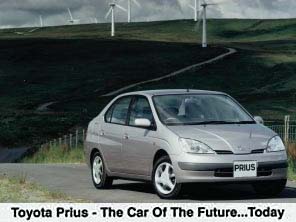
In addition to such incremental improvements, there are also more radical possibilities, such as the 'Hypercar', proposed by engineers at the Rocky Mountain Institute in the USA (Figure 53).
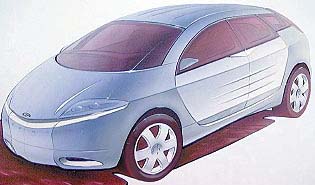
This approach involves the use of strong but ultra-lightweight composite materials such as carbon fibre or Kevlar, combined with a highly streamlined body shell. The drive system would be either the 'hybrid' type, consisting of a small gasoline-fuelled engine augmented by electric motors and a small battery store, or a more advanced system employing a fuel cell powered by hydrogen. Fuel cells are rather like conventional batteries, except that they are continuously re-charged by supplying fuel – usually hydrogen gas – that reacts electrolytically with oxygen from the atmosphere to produce an electric current. In the hypercar, the fuel cell would generate electricity for electric motors that provide power to the wheels. The hydrogen fuel would either be stored in tanks in its pure form, or generated on-board by 're-forming' fossil fuels. The oxygen would come from the surrounding atmosphere. Hypercars, their proponents claim, could achieve between three and five time the fuel economy of current models, with emissions levels approaching zero in the case of the hydrogen-fuel cell version.
Hypercars may still be some way off, but major manufacturers such as Daimler-Chrysler and Ford have recognised the need to make dramatic reductions in vehicle CO2 emissions in the long term, and are investing many hundreds of millions of dollars in the production of fuel-celled vehicles (Figure 54).
